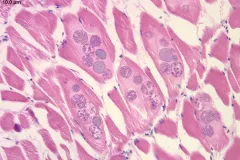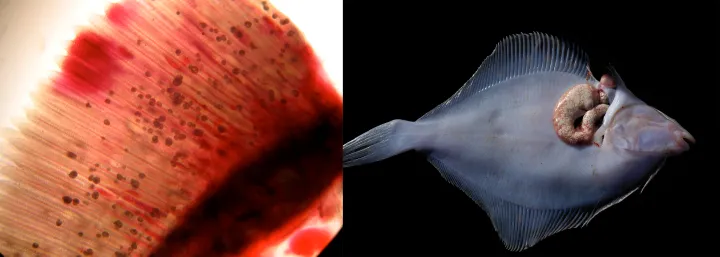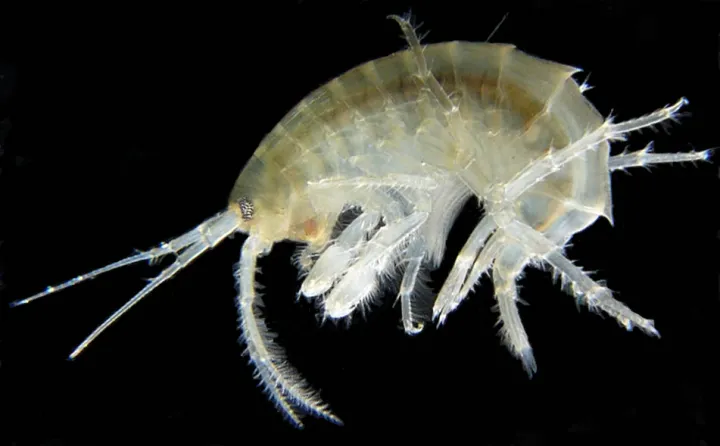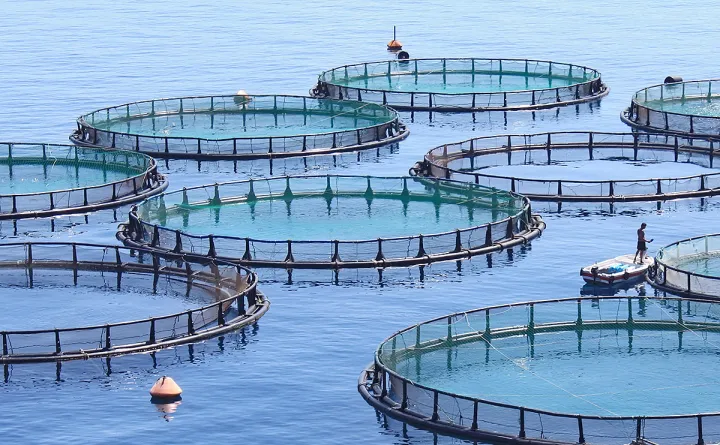Meet Microsporidia, a Marine Microbe Related to Mushrooms

When you think of fungi, you might imagine mushrooms dotting a forest floor or mold taking over old sandwich bread. But there are also different, parasitic fungi lurking and multiplying in the bodies of sea creatures throughout the world’s oceans.
These fungi, called microsporidia, live inside the cells of a host organism and cannot reproduce without it. They infect nearly every major animal group on land and at sea, including fish, crustaceans (like lobsters and crabs), insects and even people.
“For every single animal species that anyone has ever comprehensively looked at, we can find a microsporidian that infects it,” said Patrick Keeling, a biologist who studies protists and other microbes at the University of British Columbia.
While there are no known instances of people contracting microsporidia infections from simply getting in the ocean, said Keeling, these fungi may pose an increasing threat to aquaculture operations, immunocompromised wildlife and the accuracy of species descriptions.
Despite their prevalence in the environment, microsporidia’s origin story is complex, thanks to their even more complicated genome. “For 10 years, a lot of people really didn't believe they were fungi,” said Keeling. His research on microsporidia gene sequencing helped solidify our understanding of their fungal origins, but microsporidia branched from the base of the fungi family tree so long ago that today they hardly bear a resemblance to the mushrooms in your fridge. Their biggest similarity, apart from their DNA, is that both organisms reproduce by releasing tiny spores into the environment and hoping for the best.
Like many organisms in the sea, marine microsporidia rely on the whims of ocean currents to disperse their next generation. If all goes well, the right animal will ingest their seed-like spores. Then the drama begins.
Similar to mushrooms and molds, microsporidia spores are wrapped in a tough material called chitin. Once a spore is swallowed by an animal, it begins to build up water pressure within its rigid spore walls. A built-in weak point at the top of the spore cell then bursts open and the polar filament — a long, coiled harpoon-like structure much like a jellyfish stinger — blasts a hole in the host’s cell, making way for the spore’s contents to pour in.
“When you watch this infection process under a microscope, it's like a gun,” said Keeling. “It goes ‘Pow!’ and everything happens in less than a second.”
Once inside, the parasite immediately gets to work on making reproductive spores, which pierce their way into the surrounding tissue. After proliferating into its host, the fungus will switch to making the environmentally resistant type of spore that infected the animal in the first place. These tougher cells can survive in the environment in a state of dormancy until they are ingested by another unfortunate animal.
For some creatures, including humans, a microsporidia infection can be deadly. “They're a little crude,” said Keeling. “They're like a sledgehammer — once they get into an animal, they infect and infect and infect, constantly making more and more spores.” In shrimp and crabs, infections can replace large sections of muscle tissue, while in fish they often target the digestive system and gills, resulting in stunted or slowed growth, muscle wasting and lethargy.
These symptoms, whether lethal or not, can result in huge losses for aquaculture operations, where animals are often kept in close quarters and may suffer from suppressed immune systems. Microsporidiosis is known to occur in both wild and cultured fish stocks, including Chinook salmon, seabream, arctic char and cod. Crustaceans, however, are parasitized more than any other group of animals in the ocean.
While most microsporidia infect their hosts by passing from one individual to another (referred to as horizontal transmission), some species hedge their bets with their female hosts by infecting their eggs and parasitizing their offspring (called vertical transmission). In the amphipod Gammarus duebeni, a small crustacean native to the coasts of the UK, various microsporidia infect its populations via both modes of transmission.
Since vertically transmitted parasites rely on females to spread them around, some species will actively shift the ratio of male to female hosts in their favor. Microsporidia do this in some amphipods by switching the host’s sex from male to female — a process known as feminization. Other species castrate male hosts or kill male offspring as embryos.
Researchers have reported microsporidia infection rates of up to 91 percent among tested G. duebeni populations. With an infection rate that high, widely accepted descriptions of the amphipods’ behavior and biology could be inconsistent or inaccurate.
Advances in gene sequencing technology have been helpful in identifying and describing microsporidia species, but we still know very little about their role in ecosystems and who exactly they are infecting. And thanks to their complex genomes, where genes evolve very quickly, it’s difficult to define species and seek them out with genetic sequencing.
“I’m a genomics person, but I'm the first to admit that we have to go back and do more natural history,” Keeling said. “We need to explore more, we need people that are just curious and want to look at what’s out there and how things are interacting.”
Microsporidia infection rates among wildlife, throughout our food chain and in humans will likely increase with population growth, the spread of invasive species and changing climates. But researchers may be able to use microsporidia infection data to aid animal victims. Microsporidiosis infections seem to spike when host populations are immunocompromised or when a non-native species is introduced. Like a reverse canary in the coal mine, the success of microsporidia can indicate a bigger problem. Indeed, when the HIV/AIDS pandemic struck the human population, microsporidia infections, which are relatively rare in humans, soared among victims of the virus.
By collecting more baseline data and keeping tabs on whether wild and farmed animals are suffering from increased rates of microsporidiosis, we could potentially target conservation strategies or adjust aquaculture conditions more effectively. This could be especially useful in the marine environment, where animals exhibit varied — and often subtle — stress responses to ocean acidification, shifting temperatures and rising sea levels.
We still have much to learn about marine microsporidia. Figuring out who they are infecting, how they change host behavior and what helps them thrive is a good start. If more observational research is in order, these fungi certainly aren’t hard to find. Like foraging for mushrooms in the forest, we just need to know what we're looking for.




